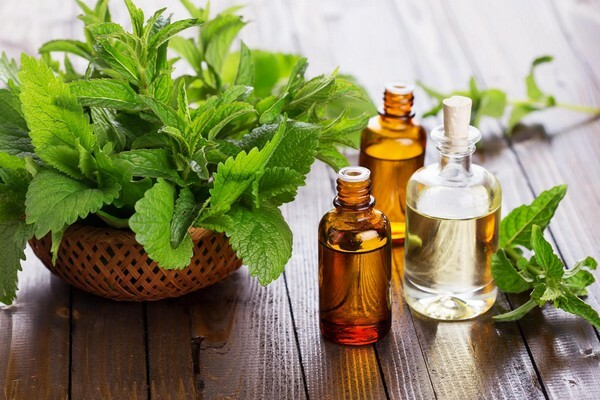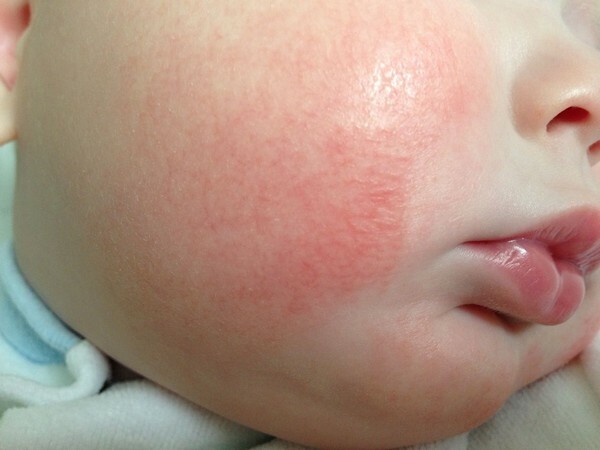Tea and infusion of their fragrant mint leaves are widely used by specialists of official and traditional medicine in the therapy of various diseases. A useful plant is a part of gastric and sedative dues, and on the basis of its essential oil, pharmacological preparations and cosmetics are manufactured. Such a wide range of applications is due to the presence in its chemical composition of a variety of biologically active substances. Because of them, an allergy to peppermint develops, for which marked clinical manifestations are characteristic. For the treatment of pathology, the doctor prescribes antihistamines in the form of tablets, ointments, eye drops and nasal sprays.

Causes of an allergic reaction
If the essential oil of a medicinal plant is contained in cosmetic or hygienic products( toothpaste, dandruff shampoo, after-sun gel), it is fairly easy to determine whether there can be an allergy to peppermint. To do this, a small amount of dense mass should be rubbed into the tender skin of the wrist or bending of the elbow. If after 25-30 minutes there were no rashes, redness, itching, the remedy is absolutely safe
But most often the reaction of sensitization develops after the penetration of the allergic agent into the gastrointestinal tract. The immune system recognizes it as a foreign protein for the human body and begins to intensively produce immunoglobulins. Increases the production of histamine - an organic compound, a biogenic amine, a mediator of allergic reactions of immediate type.
Warning: In response to ingestion of peppermint oil in the digestive tract in individuals with individual sensitivity, the level of antibodies, leukocytes and T-lymphocytes in the systemic circulation increases. The result of their interaction with the allergic agent becomes an acute or chronic inflammatory process.
The main cause of allergy to peppermint is essential oil, contained in both fresh and dry vegetable raw materials. Especially often, skin rash and dyspeptic disorders occur on its following ingredients:
- Menthol;
- citral;
- pinene;
- limonene;
- cineole.
Often allergy symptoms develop and tannins from the chemical composition of mint tannins - specific biologically active compounds that are present in almost all plants of the family. They give the infusions and broths a tart astringent taste.
If an adult is diagnosed as allergic to menthol, then it can not be used to treat neuroses or angina pectoris Validol and Valocordin. This ingredient of ethereal mint oil manufacturers are also added to throat sprays, lozenges for resorption, candies to facilitate breathing.
Tip: A predisposition to developing allergies should be considered when choosing a chewing gum, cooling ointments or gels with menthol.

Allergy in children
Allergy to mint in a child can be both congenital and acquired. Medicinal plants are not prescribed by pediatricians to treat children under 12 years old, but some parents give the kids tea or infusion for better sleep or digestive disorders. Mint contains a very high concentration of essential oil, so there is nothing surprising in such a reaction of the child. Children are predisposed to the development of allergies to the medicinal plant because of the characteristics of the body:
- blood vessels of babies are highly permeable, which explains the rapid spread of allergens;
- children's immunity is at the stage of formation, so the body's resistance to allergic agents is low;
- in a child metabolic processes occur much faster than in an adult, which causes the rapid development of antibodies by the immune system.
Increased sensitivity in children is often formed with frequent use by parents of skin care products of a baby with menthol - cream, milk, foams. Allergy to peppermint in babies develops as a result of the use of a mother feeding a fresh plant or beverages made from it. All chemicals from the plant easily overcome biological barriers, and therefore accumulate in breast milk. Pediatricians strongly recommend that women in the period of lactation refuse to take all phytopreparations.
Allergy in adults
Generally, congenital allergy to peppermint is detected in childhood, so an adult takes all measures to avoid contact with the plant or its chemical ingredients. But often the pathology develops after 40-45 years on the background of changes in the hormonal background. Allergies can also provoke chronic diseases of the internal organs:
- of the liver;
- of the kidney;
- of the bladder.
For them, a pathological change in the biochemical metabolic processes is characteristic. Liver cells hepatocytes lose the ability to fully process essential oil and tannins, and urine organs produce end products of decay.
Recommendation: Often, allergy symptoms occur with intestinal dysbiosis, leading to a sharp decrease in immunity and metabolic disorders. In this case, the problem will help to solve the course of taking probiotics and prebiotics, which restore the number of useful bifido- and lactobacilli.

Symptoms of
Symptoms of allergy to peppermint can differ both in their severity and location. Most often, doctors diagnose external clinical manifestations in the form of a small rash, itching, reddening of the upper layer of the epidermis, swelling. With an intensive response of the immune system to the penetration of allergic agents, large blisters filled with liquid contents can form.
Warning: Young children often can not cope with itching and sorely comb their skin, which leads to infection with staphylococci or streptococci.
For the allergic reaction to peppermint, the following symptoms are also characteristic:
- Perspiration in the throat, frequent coughing, dry cough;
- congestion and flow from the nose, swelling of the mucous membranes of the nasopharynx;
- sneezing;
- lacrimation, redness of the eye.
In people with chronic pathologies of the gastrointestinal tract or urinary system, there is weakness, a decrease in mental and physical performance. And the allergy to mint in children often manifests itself as symptoms of a general intoxication of the body: a rise in temperature above the low-grade values, dyspeptic disorders - nausea, vomiting, increased gas production, diarrhea, or constipation.
In therapy of the pathological condition, antihistamines Loratadin, Zodak, Zirtek, Tavegil, Suprastin are used. With allergic conjunctivitis, ophthalmologists prescribe eye drops Kromogeksal, and with nasal congestion - nasal sprays Tizin Allergi, Nazonex, Fliksonase. And to eliminate the symptoms of general intoxication, anti-inflammatory nonsteroidal agents Ibuprofen, Nimesulide are used in the treatment.
